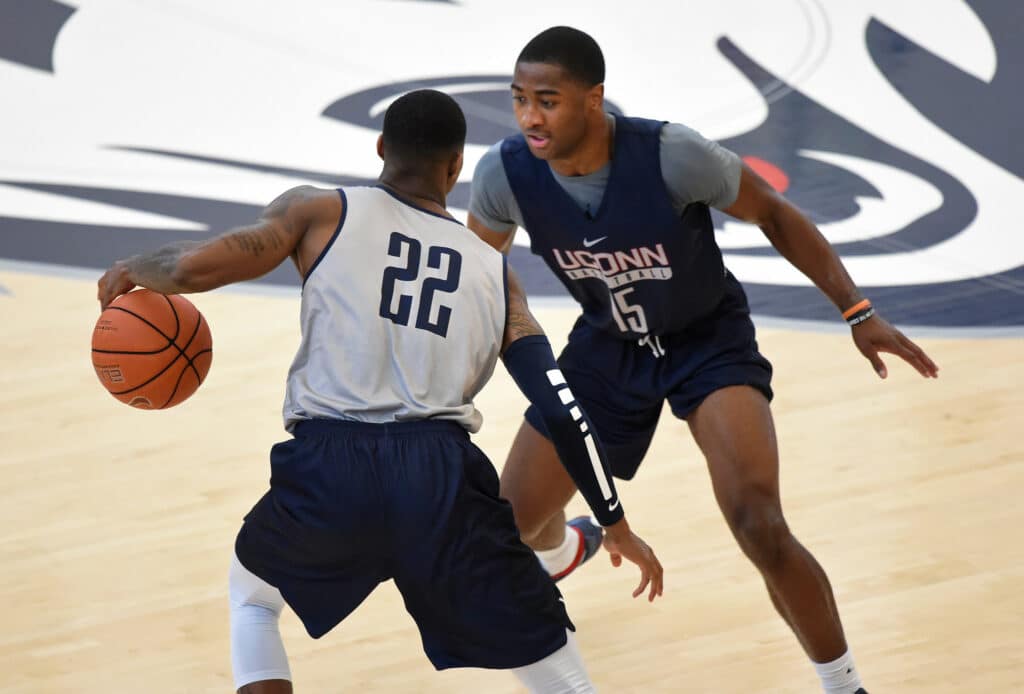
How to Maximize Practice Time for Efficiency: Making the Most of Your Practices
Maximizing practice time for efficiency is crucial for developing a successful basketball team. Effective use of practice time ensures that players improve their skills, understand game strategies, and stay engaged throughout the season.
In the fast-paced environment of basketball, where each moment counts, the ability to use practice time wisely can lead to significant improvements in performance on the court.
This article provides strategies for making the most of your practice time, helping you enhance your team’s performance and achieve your coaching goals.

1. Plan and Structure Your Practice Sessions
A well-structured practice session maximizes time efficiency and ensures that all key areas are addressed.
Create a Practice Plan
Develop a detailed practice plan that outlines the drills, activities, and objectives for each session. Include time allocations for each segment to stay organized and focused.
- Weekly Planning: Plan your weekly practices in advance, focusing on different themes each day, such as offense, defense, and conditioning. This allows players to mentally prepare for what to expect.
- Flexibility: While having a plan is essential, be ready to adjust it based on the team’s needs, player feedback, and upcoming games.
Prioritize Objectives
Identify the key objectives for each practice and prioritize them. Focus on the most critical areas such as skill development, team strategies, or conditioning, depending on your team’s needs.
- Short-Term and Long-Term Goals: Define both short-term goals (e.g., improving free throw shooting) and long-term goals (e.g., developing a more cohesive team defense). This helps keep players focused and motivated.

2. Utilize a Practice Schedule
A consistent practice schedule helps maintain organization and ensures that all aspects of the game are covered.
Set a Regular Schedule
Establish a regular practice schedule and stick to it. Consistency helps players develop a routine and maximizes their ability to absorb and apply coaching.
- Pre-Season Planning: Outline the practice schedule for the entire season, including regular updates for holidays, games, and special events. This allows players and families to plan accordingly.
- Consistency: Having practices at the same time each week helps build routine and discipline among players.
Balance Practice Types
Alternate between different types of practices, such as skill-focused sessions, tactical practices, and scrimmages. This balance keeps practices engaging and addresses various aspects of the game.
- Skill Development: Dedicate specific days to fundamental skill work, such as shooting and ball handling.
- Tactical Focus: Use other days to focus on specific offensive and defensive strategies.
3. Incorporate Efficient Drills
Efficient drills maximize player development while minimizing time spent on each activity.
Focus on Game-Like Situations
Choose drills that simulate game scenarios and challenge players to apply their skills in realistic situations. This approach enhances their ability to perform under game conditions.
- Small-Sided Games: Incorporate small-sided games (3-on-3 or 4-on-4) that require players to think and react quickly while practicing teamwork.
- High-Pressure Drills: Design drills that incorporate game pressure, such as a “last shot” scenario, where players must execute under a time constraint.
Use Multi-Skill Drills
Implement drills that target multiple skills simultaneously. For example, combine dribbling with shooting or defensive movements with passing to optimize practice time.
- Combined Drills: Design drills where players dribble to a designated spot, execute a jump shot, and then sprint back on defense. This keeps them engaged and working on various skills.

4. Implement Time Management Techniques
Effective time management during practice sessions ensures that all objectives are met without unnecessary delays.
Use a Timer
Utilize a timer to keep track of the duration of each drill or activity. This helps maintain the pace of practice and ensures that you stay on schedule.
- Time Blocks: Allocate specific time blocks for each segment of practice and stick to them to keep the flow consistent.
- Visual Countdown: Consider using a visual countdown timer that players can see, helping them understand the urgency of completing the drill.
Transition Smoothly
Plan for smooth transitions between drills and activities. Minimize downtime by preparing equipment and setting up drills in advance.
- Pre-Set Drills: Set up drills before practice starts to maximize time. Have assistants or team leaders help with the transitions, ensuring a quick shift to the next activity.
5. Focus on Player Engagement
Engaged players are more likely to maximize their practice time and improve their skills.
Incorporate Variety
Keep practices engaging by incorporating a variety of drills and activities. Avoid repetitive routines that may lead to boredom or disengagement.
- Diverse Activities: Rotate drills regularly to keep players interested. Include shooting competitions, fun challenges, and team-building exercises.
- Player Input: Occasionally ask players for input on drills or activities they would like to incorporate, fostering a sense of ownership.
Provide Feedback
Offer constructive feedback and positive reinforcement to keep players motivated. Recognize their efforts and progress to encourage continued improvement.
- Immediate Feedback: Provide real-time feedback during drills so players can make adjustments on the spot, enhancing their learning experience.
- Goal Recognition: Celebrate milestones and improvements, whether small or large, to boost morale and maintain engagement.

6. Use Technology to Enhance Practice
Technology can enhance practice efficiency and provide valuable insights.
Video Analysis
Use video analysis tools to review practice sessions and provide feedback. Analyze players’ performance to identify areas for improvement and track their progress over time.
- Post-Practice Review: Record practices and review them with players. Highlight areas of success and improvement to reinforce learning.
- Individualized Feedback: Use video clips of individual players to provide targeted feedback, helping them visualize their performance.
Coaching Apps
Implement coaching apps to organize drills, track player performance, and communicate with your team. These tools streamline practice planning and help manage time effectively.
- Shared Calendars: Use apps that allow players to access schedules, practice plans, and other resources on their devices, making it easier for them to stay informed.
- Performance Tracking: Utilize apps that track player statistics and progress, providing insights that can inform future practice plans.
7. Optimize Practice Space and Equipment
Efficient use of practice space and equipment can enhance the effectiveness of your sessions.
Organize Equipment
Ensure that practice equipment is organized and easily accessible. This reduces setup time and allows for a smoother transition between drills.
- Equipment Inventory: Regularly check and maintain practice equipment, ensuring everything is in good condition and ready for use.
- Designated Areas: Create designated areas for different drills to minimize confusion and maximize efficiency.
Utilize Space Wisely
Make the most of available practice space by arranging drills and activities to maximize player movement and interaction. Avoid congestion and ensure that players have ample space to perform drills effectively.
- Practice Layout: Design the practice layout to allow for multiple drills happening simultaneously, ensuring that players are constantly engaged and moving.

8. Evaluate and Adjust Your Practice Approach
Regular evaluation and adjustment of your practice approach ensure continued efficiency and effectiveness.
Assess Practice Effectiveness
Periodically evaluate the effectiveness of your practice sessions. Gather feedback from players and assess whether practice objectives are being met.
- Surveys and Feedback Forms: Implement anonymous surveys to gather player feedback on practice sessions, drills, and overall satisfaction.
- Post-Practice Reflection: Hold brief reflection sessions after practice to discuss what worked well and what could be improved.
Adjust as Needed
Be prepared to adjust your practice plans based on feedback and observations. Make changes to address any areas of concern and improve overall practice efficiency.
- Flexible Approach: Maintain flexibility in your practice plans, allowing you to adapt based on player needs, game schedules, and performance evaluations
How to Maximize Practice Time for Efficiency Conclusion:
Maximizing practice time for efficiency involves careful planning, effective time management, and a focus on player engagement. By implementing structured practice plans, incorporating efficient drills, and utilizing technology, you can enhance your team’s development and performance.
Regularly evaluate and adjust your practice approach to ensure continued success and achieve your coaching goals.



